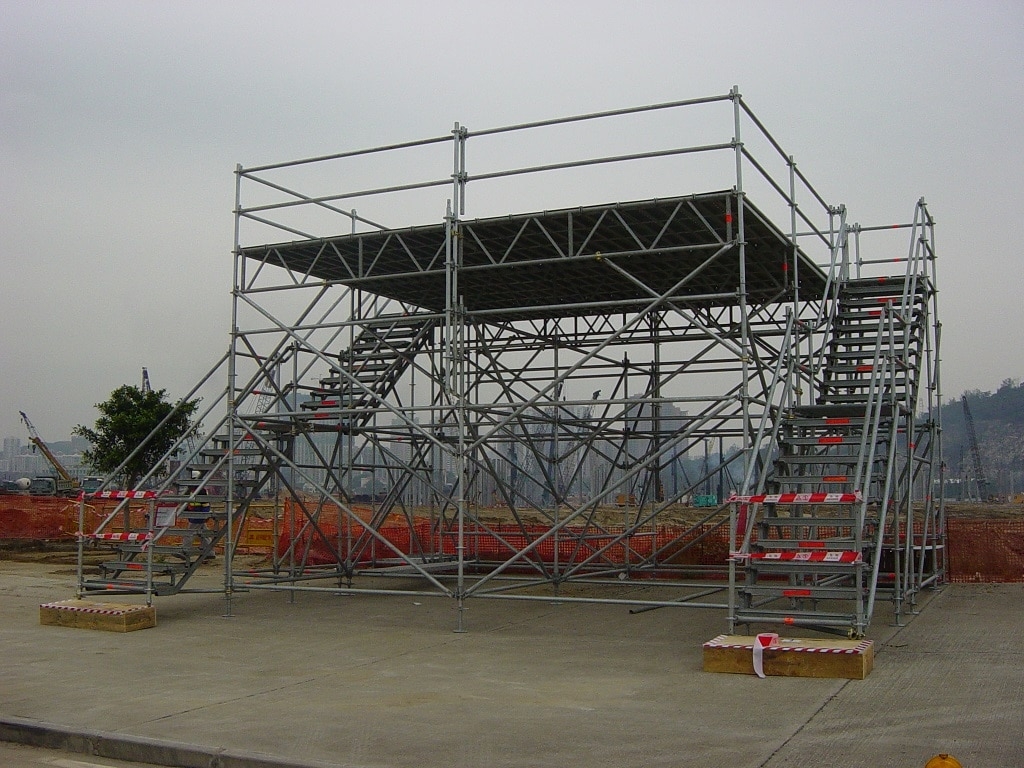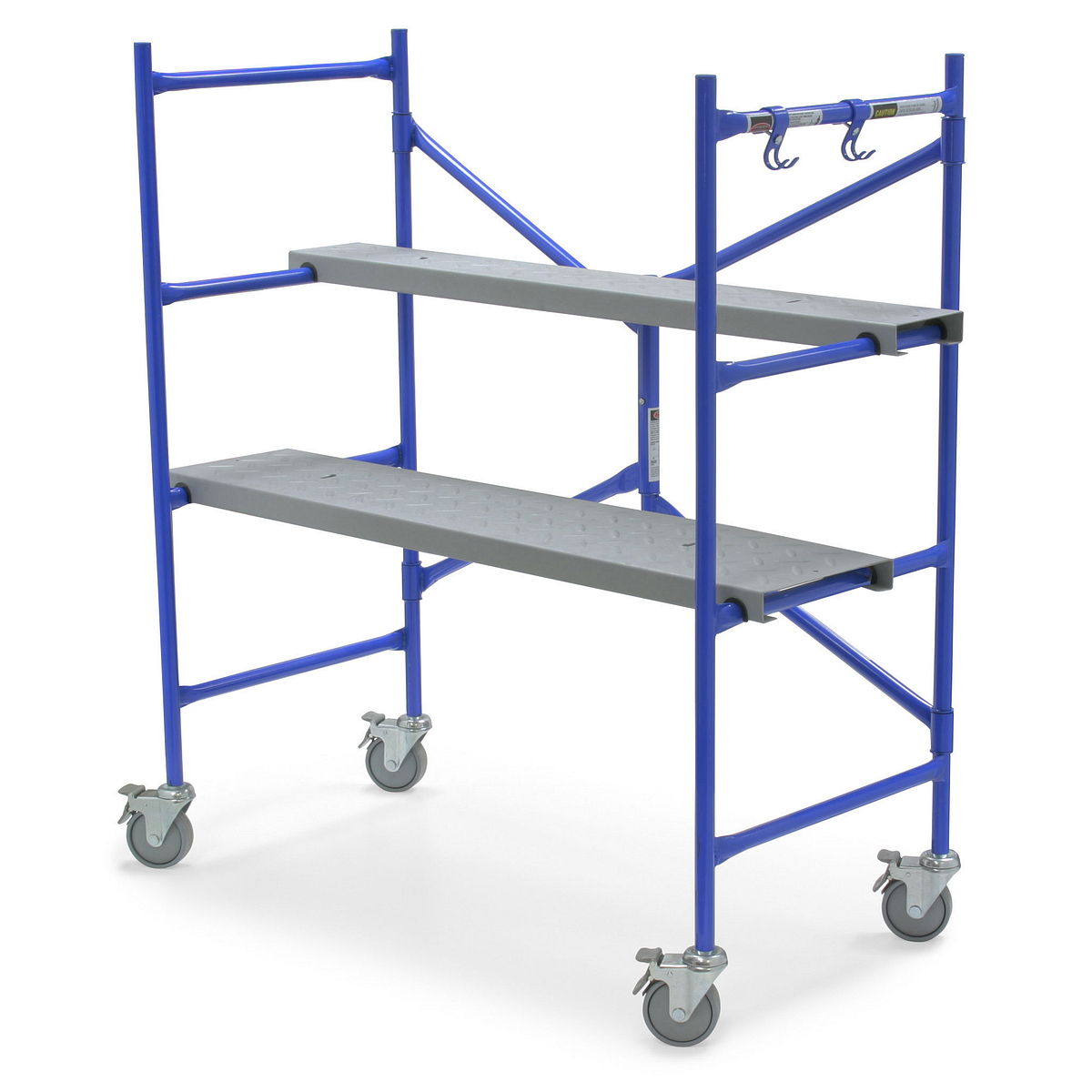Find Reliable Scaffolding Services in Surrey for Your Project Needs
Find Reliable Scaffolding Services in Surrey for Your Project Needs
Blog Article
Exploring the Different Types of Scaffolding Used in Building And Construction Projects
The construction market depends heavily on different types of scaffolding to satisfy specific job requirements, each offering unique benefits and applications. Conventional structure scaffolding offers a tough structure for basic jobs, while suspended scaffolding is crucial for work on skyscraper structures.

Conventional Framework Scaffolding
Typical structure scaffolding is just one of the most extensively utilized methods in the construction industry due to its toughness and adaptability. This system is composed of horizontal and vertical frames that are set up to produce a steady system for materials and workers. The major elements consist of upright blog posts, straight journals, and angled dental braces, which together offer a strong framework that can sustain significant loads.
One of the key benefits of conventional frame scaffolding is its flexibility to different building projects, varying from residential structures to huge commercial structures. The modular layout allows for simple assembly and disassembly, making it reliable for both lasting and temporary projects. Furthermore, the system can be tailored in height and width, suiting different building styles and website problems.
Safety is vital in scaffolding applications, and conventional structure systems are furnished with guardrails and toe boards to prevent falls and make certain worker defense. Regular assessments and adherence to safety and security guidelines are essential in preserving the stability of the scaffold (Scaffolding). On the whole, traditional frame scaffolding remains an essential option in the building market, giving a reliable platform for labor and enhancing overall project efficiency

Suspended Scaffolding
Suspended scaffolding offers an one-of-a-kind option for building projects that need access to elevated surfaces, especially in situations where standard structure scaffolding might be unwise. This kind of scaffolding is typically suspended from the roofing system or top degrees of a structure, using a system of ropes, platforms, and wheels to develop a functioning space that can be gotten used to different heights.
Among the primary benefits of put on hold scaffolding is its adaptability. It can be easily repositioned or lowered to accommodate adjustments in building and construction demands, making it excellent for tasks such as home window setup, façade job, and maintenance on skyscrapers. Furthermore, the very little footprint of suspended scaffolding permits far better use of ground room in urban settings, where area is typically minimal.
Security is an essential factor to consider in the use of suspended scaffolding. Generally, put on hold scaffolding offers a effective and reliable solution for accessing hard-to-reach locations in numerous construction situations, boosting both performance and security on website.
System Scaffolding
System scaffolding, often regarded as a modern-day remedy in the scaffolding market, contains pre-engineered parts that can be quickly set up and adjusted for numerous building and construction projects. Scaffolding. This kind of scaffolding is identified by its modular design, which permits adaptability and performance on job websites, suiting architectural needs and different elevations
Commonly made from high-strength steel or light weight aluminum, system scaffolding provides boosted toughness and security. The parts consist of vertical posts, straight journals, and diagonal dental braces, which adjoin safely, making certain a durable framework. The style typically incorporates standardized fittings, simplifying assembly and disassembly procedures, therefore reducing labor time and costs.

Rolling Scaffolding
Moving scaffolding is a versatile alternative to traditional set scaffolding, made for movement and convenience of usage on construction sites. This kind of scaffolding contains a system sustained by frames with wheels, enabling employees to easily relocate it as needed. The mobility function significantly boosts performance, as it reduces downtime related to constructing and disassembling dealt with scaffolding.
Generally created from light-weight materials such as light weight aluminum or steel, rolling scaffolding provides a sturdy yet mobile option for tasks needing regular repositioning - Scaffolding. It is especially beneficial in tasks such as painting, drywall setup, and electric work, where accessibility to numerous elevations and locations is required
Security is paramount in rolling scaffolding style, with attributes such as securing wheels to avoid unplanned activity when in usage, and guardrails to safeguard workers from drops. Furthermore, lots of versions are flexible in height, suiting numerous job demands.
Cantilever Scaffolding

The design of cantilever scaffolding usually includes using brackets or arms secured to a building or framework, making it possible for the platform to extend external safely. Safety sites is critical; therefore, these scaffolds should be crafted to withstand numerous tons and ecological problems. Normal examination and maintenance are necessary to make sure structural integrity and worker safety and security.
Cantilever scaffolding is favored for its versatility and efficient use area, making it a popular option in urban atmospheres where room restrictions are typical. It facilitates less complicated access to high altitudes, inevitably adding to the overall effectiveness of construction tasks. As with all scaffolding types, correct training and adherence to safety and security criteria are vital for workers utilizing cantilever scaffolding.
Conclusion
To conclude, the varied kinds of scaffolding used in construction projects each offer unique functions tailored to particular site requirements. Conventional frame scaffolding supplies stability, while put on hold scaffolding offers versatility for raised tasks. System scaffolding helps with quick assembly, and rolling scaffolding enhances wheelchair for varying workplace. Cantilever scaffolding properly resolves challenges in metropolitan settings. Understanding these scaffolding kinds is vital for maximizing security and productivity in building, eventually adding to the effective conclusion of jobs.
Traditional structure scaffolding supplies a tough foundation for general jobs, while put on hold scaffolding is important for job on skyscraper structures.Rolling scaffolding is a functional alternative to standard fixed scaffolding, developed for movement and simplicity of use on construction websites. As with all scaffolding check out this site types, proper training and adherence to safety and security requirements are essential for workers using cantilever scaffolding.
Typical frame scaffolding supplies security, while put on hold scaffolding uses flexibility for raised tasks. System scaffolding assists in quick assembly, and rolling scaffolding improves wheelchair for differing work atmospheres.
Report this page